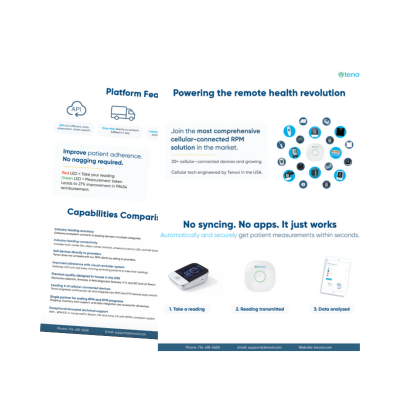Virtual eating disorder programs offer new options for how individuals with eating disorders receive care. Eating disorders are complex conditions that impact physical, psychological, and social well-being. According to the American Psychiatric Association, these disorders involve persistent disturbances in eating behaviors and distressing thoughts.
Common types include anorexia nervosa, bulimia nervosa, binge eating disorder, and avoidant restrictive food intake disorder. Given their complexity, treatment requires a comprehensive approach that addresses both medical and psychological aspects.
This article explores how remote monitoring enhances virtual eating disorder programs, the research supporting its effectiveness, and the tools that empower patients on their recovery journey.
Virtual Eating Disorder Programs and Remote Monitoring
Virtual eating disorder programs for treatment have emerged as an accessible and effective solution for individuals seeking recovery. This approach combines telehealth consultations with remote patient monitoring (RPM) and remote therapeutic monitoring (RTM) to provide continuous care. By integrating technology, virtual programs can offer personalized treatment that adapts to patient needs.
Within Health, a leading provider of virtual eating disorder treatment employs innovative tools such as numberless scales to support patients. These scales automatically transmit data to clinicians while shielding patients from viewing weight readings, thereby reducing anxiety and promoting a healthier relationship with their bodies. This method allows healthcare providers to monitor weight trends while prioritizing patient mental well-being.
Remote monitoring goes beyond weight tracking. Many virtual treatment programs use wearable devices to assess physiological indicators such as heart rate variability, physical activity levels, and sleep patterns. By continuously gathering data, clinicians gain valuable insights into a patient’s overall health and can intervene proactively when needed.
Research Supporting Virtual Eating Disorder Programs
Scientific research continues to validate the effectiveness of RPM and RTM which use virtual eating disorder programs for patient management. A groundbreaking study published in the International Journal of Eating Disorders evaluated the Eat Breathe Thrive Recovery program (EBT-R) with 277 participants from 27 countries, aged 18 to 65. Nearly 70% of participants had been living with eating disorders for over a decade—a population often labeled as having “severe and enduring eating disorders” and described as resistant to treatment. The study found that the four-week intervention resulted in significant improvements, including reductions in eating disorder symptoms, depression, and anxiety, as well as increases in body trust, self-regulation, mindful self-care, and intuitive eating. Importantly, these improvements were sustained and even enhanced at a three-month follow-up, demonstrating the lasting impact of the intervention.
A systematic review published in the Journal of Treatment and Prevention found that virtual treatment programs incorporating remote monitoring improved patient engagement and adherence to treatment protocols. These programs also provide structured support, to reduce dropout rates and enhance long-term recovery outcomes.
Moreover, research indicates that remote delivery of evidence-based treatments is particularly effective for adolescents. Adolescents face unique barriers to in-person treatment, such as school commitments, stigma, and lack of transportation. Virtual treatment eliminates these obstacles, offering accessible, flexible, and tailored interventions for young patients.
Patient Experience and Digital Tools
Digital tools such as the Recovery Record smartphone app empower individuals to take an active role in their recovery. This app functions as a self-monitoring tool, allowing patients to log meals, thoughts, and behaviors while maintaining direct communication with their clinicians. By fostering engagement and accountability, Recovery Record helps bridge the gap between therapy sessions.
In addition to self-monitoring apps, some virtual eating disorder programs integrate AI-powered chatbots to provide immediate support between clinical sessions. These chatbots offer evidence-based coping strategies, answer patient questions, and encourage adherence to treatment plans. This constant availability ensures that patients receive guidance whenever they need it.
Wearable devices, such as smart watches, also contribute to the effectiveness of virtual eating disorder programs. Some devices track physiological data such as heart rate and stress levels, alerting clinicians to potential relapses. By monitoring these metrics, healthcare providers can detect early warning signs and intervene before a full relapse occurs.
Understanding Virtual Eating Disorder Programs
The integration of RPM and RTM in virtual eating disorder programs represents a shift toward data-driven, personalized care. As technology advances, remote monitoring tools will become even more sophisticated, offering enhanced capabilities for tracking patient progress. Future developments may include AI-driven predictive analytics that identify relapse risks before symptoms become severe, allowing for earlier intervention.
Additionally, further research is needed to expand the evidence base supporting virtual treatment programs. Large-scale studies assessing long-term outcomes can provide deeper insights into the effectiveness of remote monitoring and help refine best practices.
By leveraging technology to provide continuous, non-intrusive monitoring, virtual eating disorder programs can improve access, enhance engagement, and optimize patient outcomes. As the field continues to evolve, the combination of remote monitoring and digital interventions will play an increasingly critical role in supporting individuals on their path to recovery.


